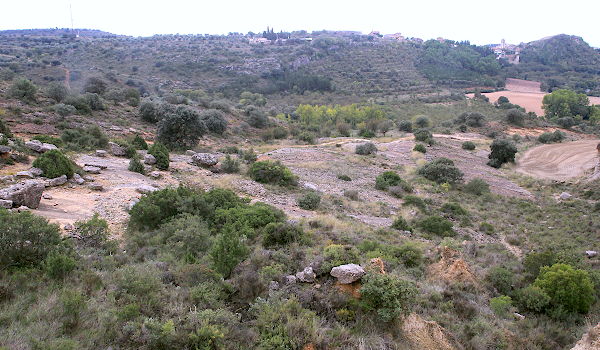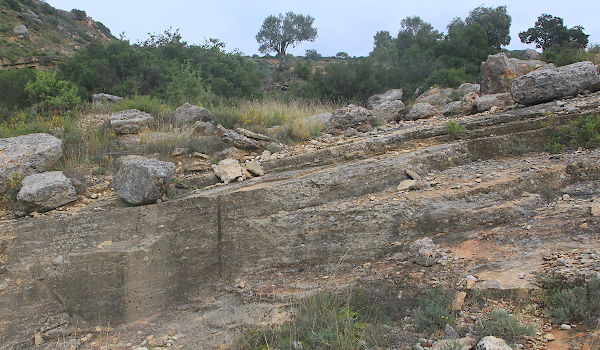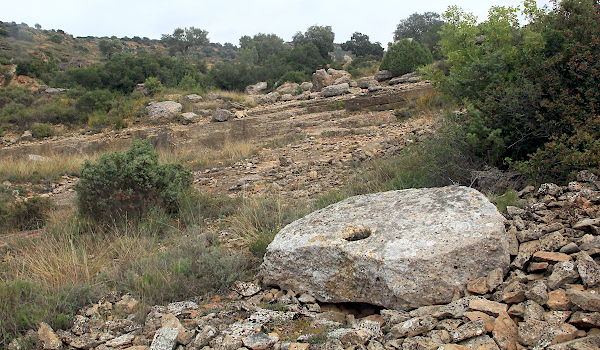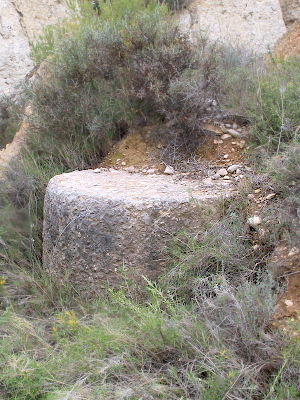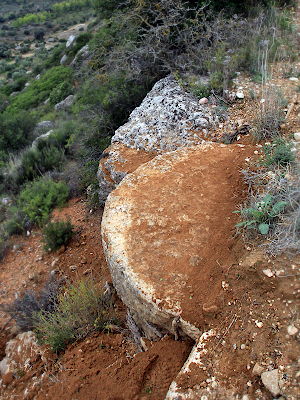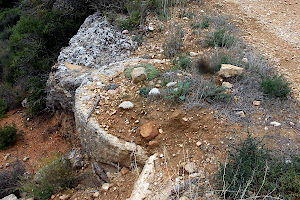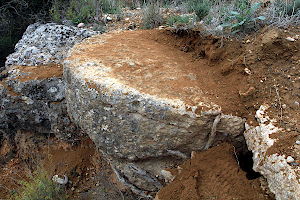Mills in Alto Aragón - stone quarry
Estadilla - La Val
Estadilla is a village at the foot
of the
Sierra de Carrodilla in the region
Somontano de Barbastro.
Estadilla is easily reached from the main road between Barbastro and Graus (N123). The site
can be accessed from the village but it is probably easier to drop your vehicle near the
Puente de los Baños on the road between Estadilla and Estada and then walk
the gravel road which starts some steps further northward. Follow the main track down into
the valley and you will reach the quarry zone (1) after about 1 km.
Pictures: 30.IX.2014
I am not sure that the word quarry is the most appropriate word
to describe this site. There is no clearly defined pit where stones were cut from the rock. Forgotten stones
and traces of (2, 3) of former extractions are scattered throughout the site which is known as La Val.
The main extraction zone (1) lies low in the valley. It is a stony slope with
many shallow traces of former activities (2, 3) and several accumulations of stone cuttings (1, 4). Many of the prints
do not show the shape of a circle, but have a width of only about a third of a circle (3): I have no idea
what that means.

(3) Many prints are about 120° wide.
Throughout the site some mill stones can be found.
We located three, but a more persistent seeker might have come up with more.
Two of the stones were found in the lower levels of the site; the third stone was found
higher up, almost on top of the ridge (8).
The largest stone (4), with a ∅ of 180cm, has about the same size
as the stones found in the quarry of Colungo and may very well
have been destined to serve as a crusher stone in an oil mill of the region.
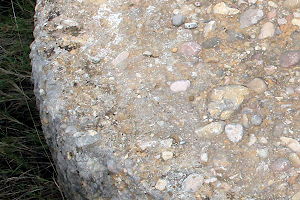
(7) Detail of stone in (5)
The second stone (5) is made of pudding stone, which
wouldn't perform very well in a flour mill, and the measurements are typical
for a crusher stone. So this one also was probably meant for an oil mill.
The third stone has a ∅ of 140cm and it
is the only piece with the right size to end up in a flour mill (most mills in the region have stones
of 130 or 140cm) — at least before composite stones (often from La Ferté) became de rigueur.


